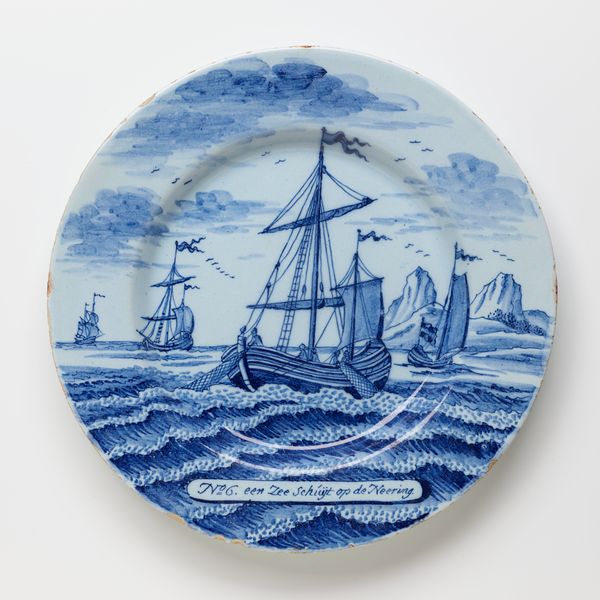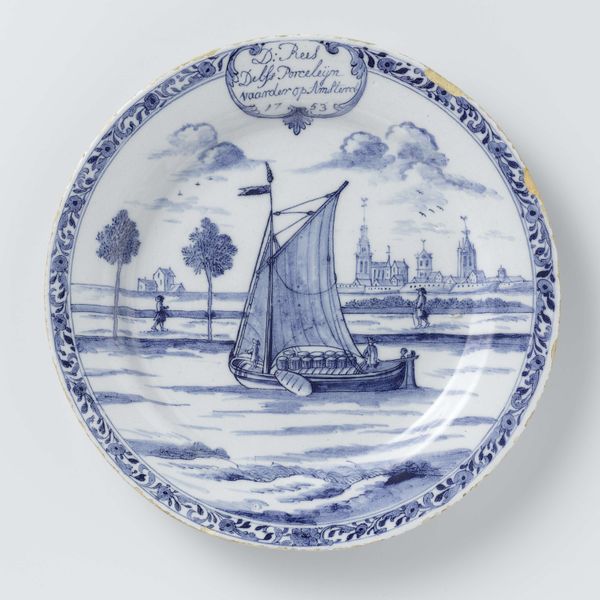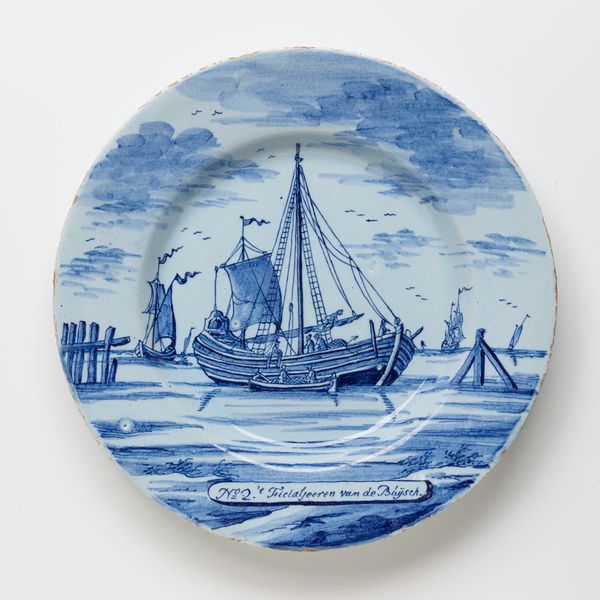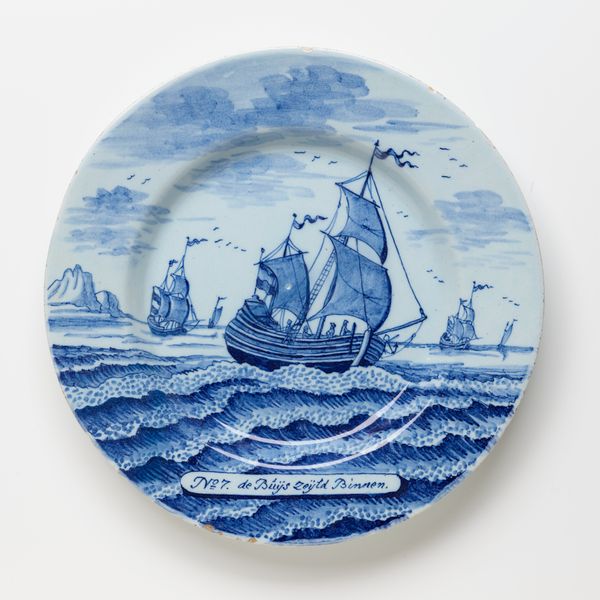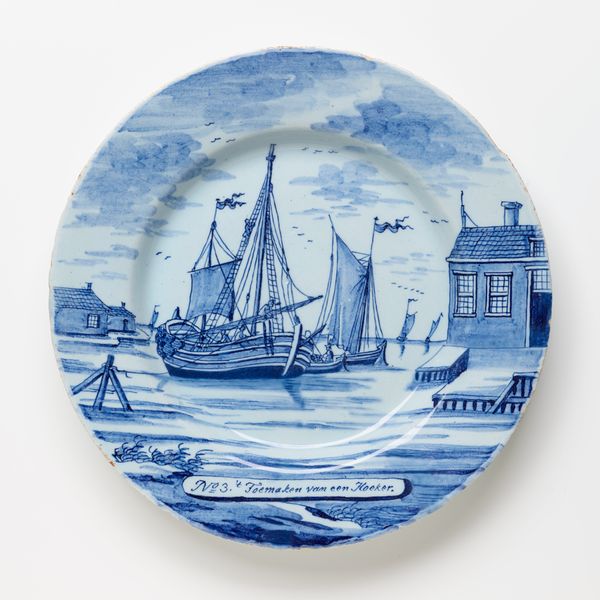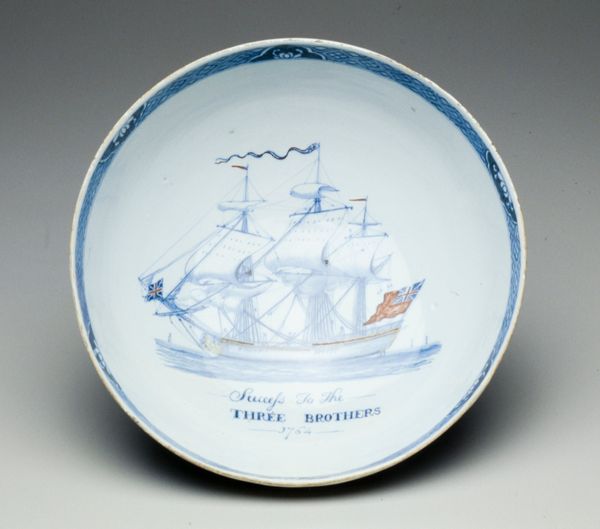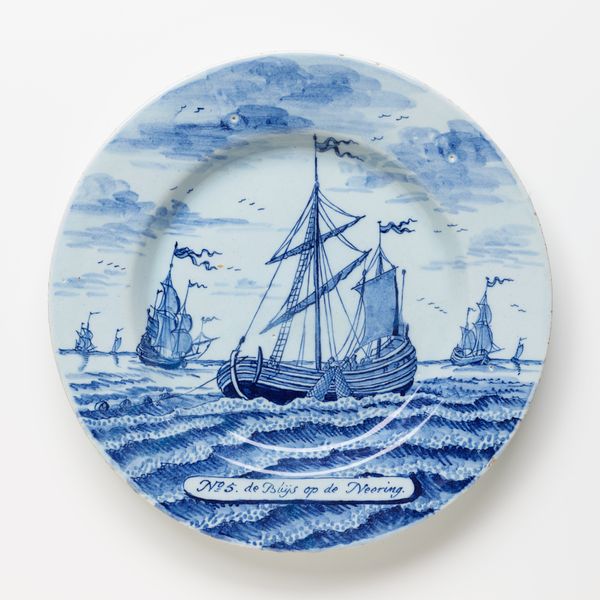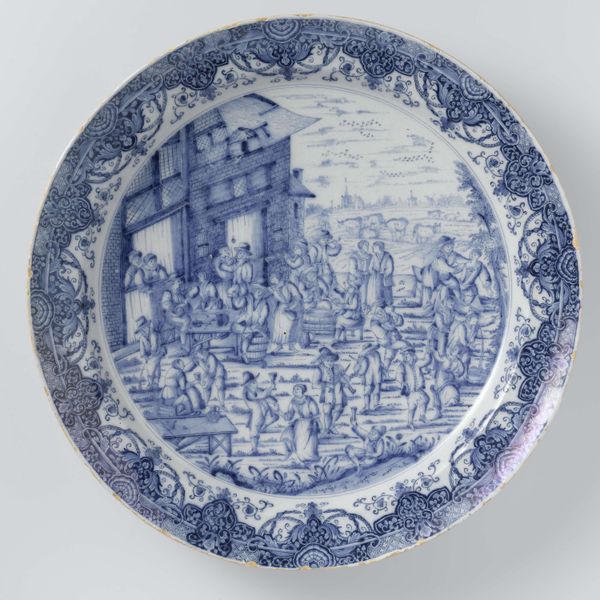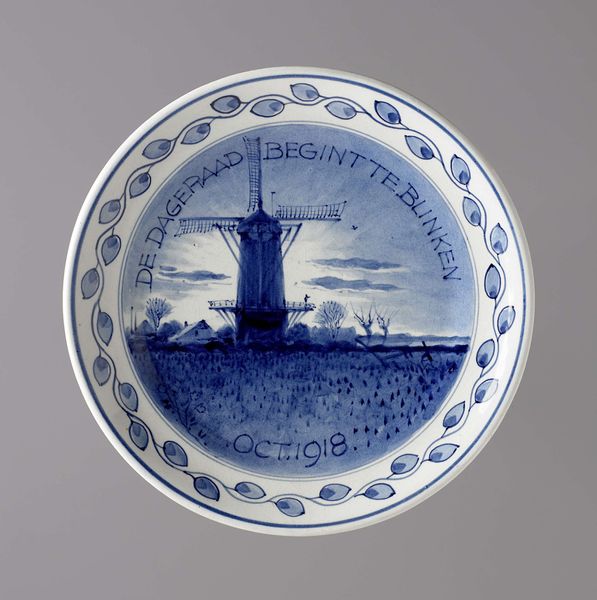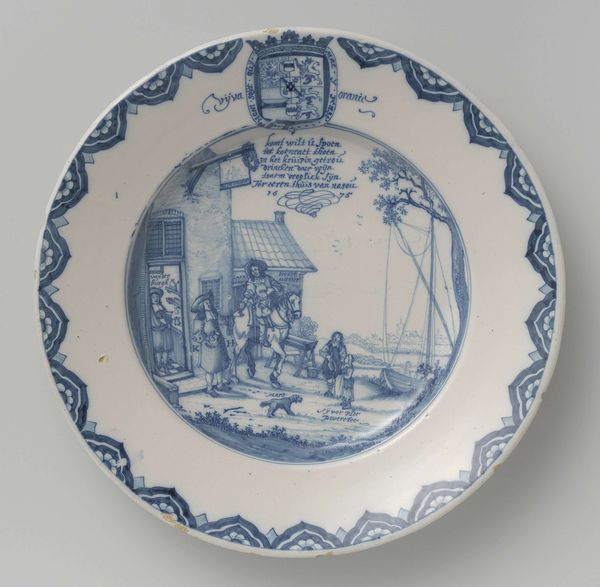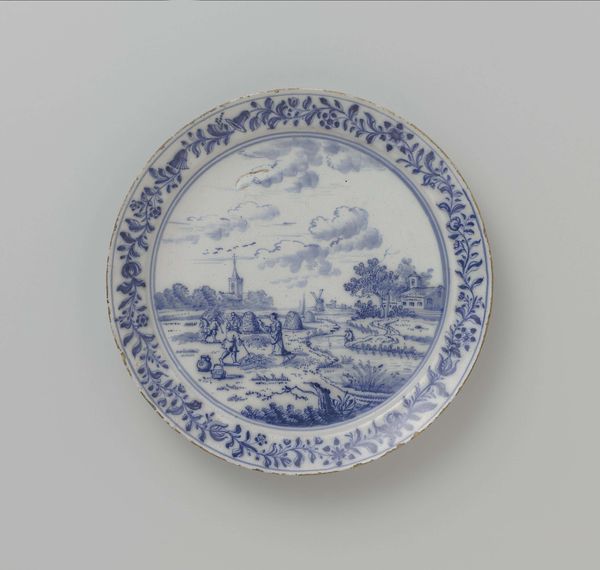
painting, ceramic
#
dutch-golden-age
#
painting
#
ceramic
#
stoneware
#
folk-art
#
ceramic
#
genre-painting
Dimensions: diameter 22.8 cm, height 3 cm
Copyright: Rijks Museum: Open Domain
Curator: Here we have a stoneware plate, “Bord met zes schepen,” which roughly translates to “Plate with Six Ships.” It dates to around 1750-1780 and was produced at De Porceleyne Byl. What strikes you initially? Editor: Well, I am immediately drawn to the almost monochromatic blues. It has a dreamlike quality, a wistful marine memory captured on this fragile disc. The overall design communicates both grand ambition and a certain melancholy, doesn't it? Curator: Absolutely. Focusing on the formal aspects, the artist masterfully used varying shades of blue to create depth and movement, the dynamic composition draws the eye around the plate, highlighting the play of light on the waves. Consider the glaze itself; how it pools and thins, impacting color density. Editor: The ships themselves become potent symbols of Dutch maritime power, but also perhaps of journeys undertaken and dreams pursued. Think of the historical context; for the Dutch, the sea held immense economic and cultural significance. It’s almost like holding a miniature worldview in your hands. Notice the inscription near the bottom; "N.o j. de Groenlan. Vloot gaat in Zee"—suggesting a Greenland fleet setting sail? Curator: The text definitely anchors it to a specific, though still romanticized, idea of maritime life. Looking closely at the brushstrokes, especially on the water, one can observe a loose, almost gestural quality, especially striking given it’s on ceramic. There’s a tension between control and spontaneity. Editor: Those waves... they are evocative of something beyond mere pictorial representation. They convey the raw power of the sea, perhaps representing the unknown and the perils that these ships and sailors would have to brave. And, even though the scale is diminutive, that suggestion of grandeur resonates strongly. Curator: Indeed, scale is important. The contrast between the vastness implied and the physical smallness is part of its charm and speaks to the broader decorative and symbolic role that objects such as this plate played in Dutch households. It also adds layers of understanding as we observe this genre-scene. Editor: Precisely. Considering both the aesthetic choices and symbolic implications brings a richer appreciation for its enduring appeal, doesn’t it? Curator: Yes, understanding its inherent materiality and design truly shapes our sense of this delicate plate.
Comments
No comments
Be the first to comment and join the conversation on the ultimate creative platform.
